$100M Webinars: How to host a webinar to get customers (in 10 steps)
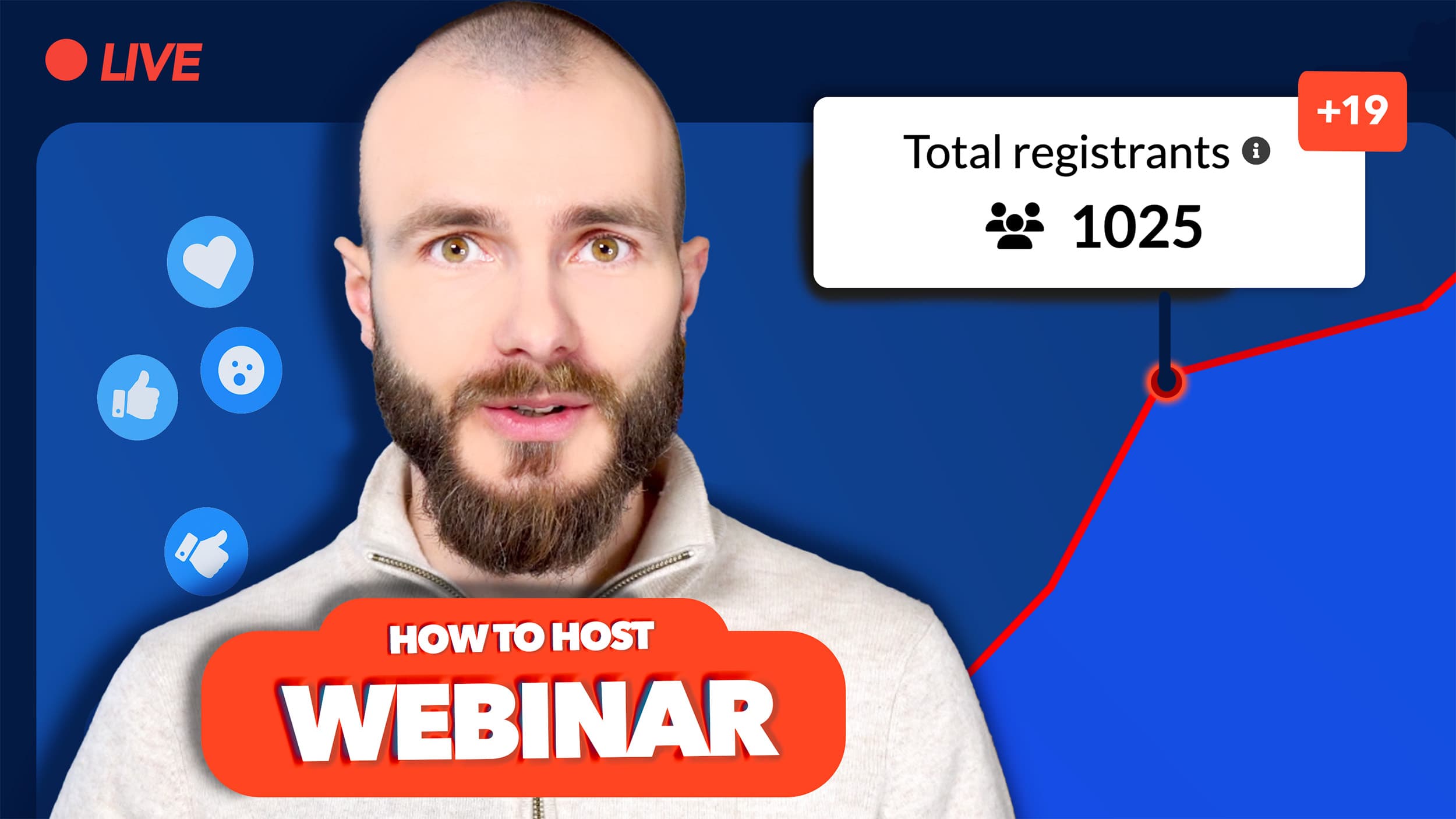
Contents
How to host a webinar that gets you customers [VIDEO]
How to host a webinar in 10 steps. Get more customers for your SaaS using webinars as a growth channel. This guide is based on real life examples and learnings from hosting 100s of webinars.
Watch the video guide, where I take you through how to create webinars like the best in 10 steps below:
What is a webinar?
A webinar is an online event that allows attendees from anywhere in the world to engage and learn around a topic.
Webinars often consist of a panel of a few speakers (visible in the video), and a larger audience (not visible in the video). This is commonly referred to as a "one-to-many" live stream. Engaging the audience is important to keep attention and increase webinar conversion rates - this is typically done through live chat, Q&A, polls, and live reactions.
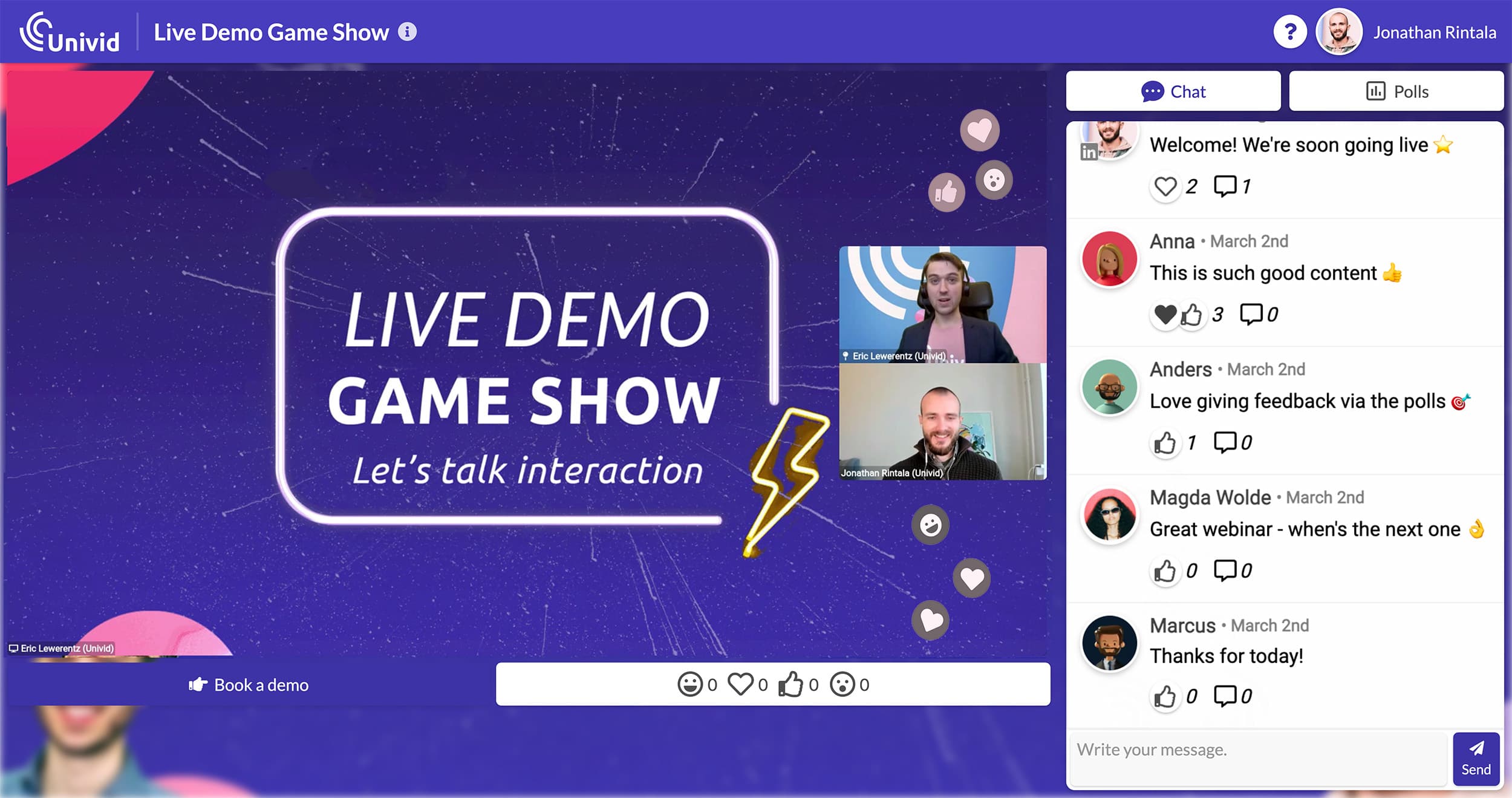
Example of a webinar in the Univid webinar platform - with engagement features
What is a $100M webinar?
A $100M webinar is an event that is so good it (1) gets you new customers, and (2) makes existing customers pay you more. Once you figured it out - this will become a money machine to grow your business.
Webinars as a growth channel
For companies, webinars are a excellent way to build trust and grow your business. Both by growing:
(A) amongst existing customers - through educational customer success webinars (upsell and grow existing contracts).
(B) new prospects - through marketing webinars (generate new leads).
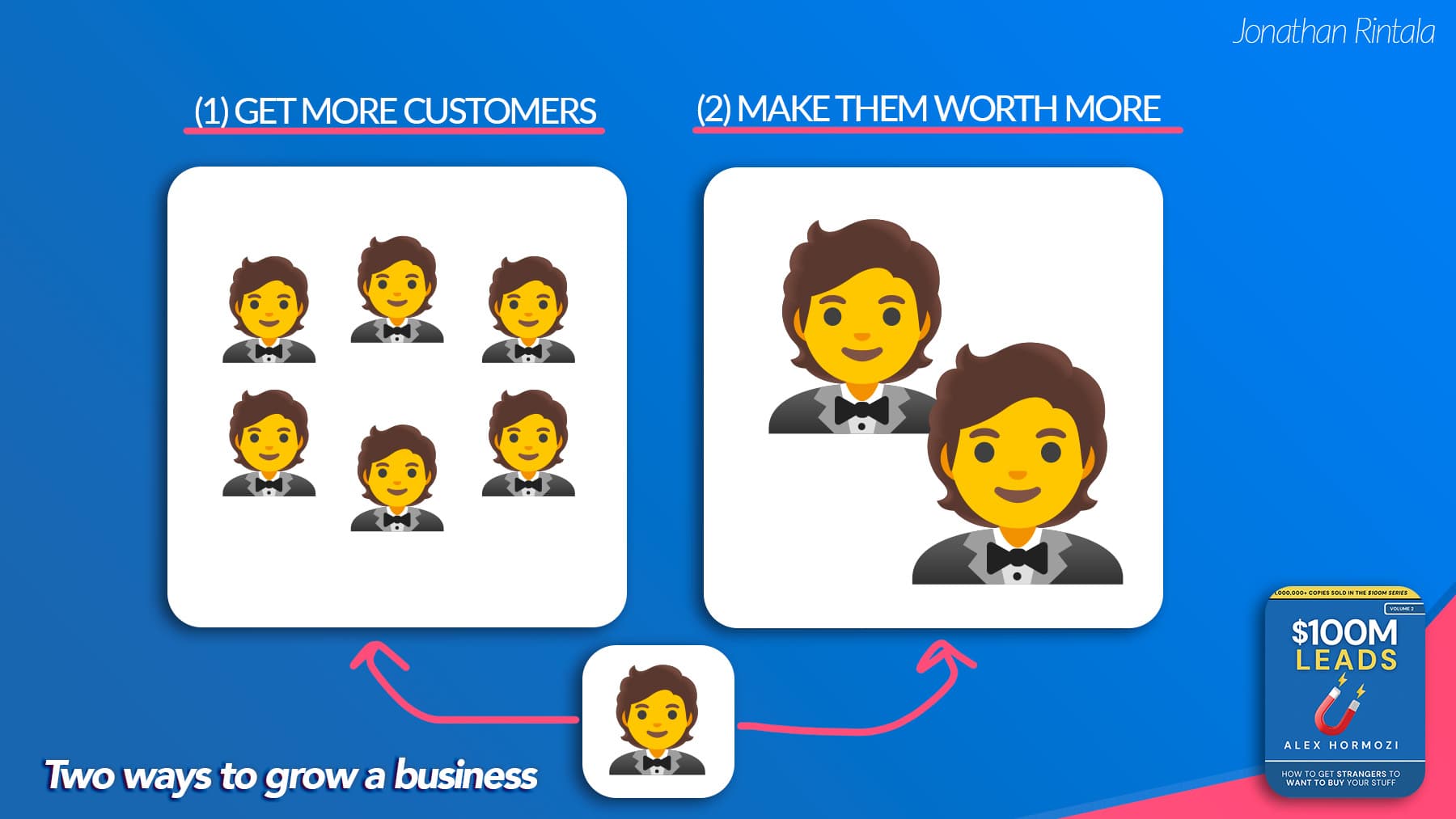
Trust is key to build a healthy SaaS and get customers, especially in B2B.
- Jonathan Rintala
As we know, trust is essential to win deals, and make existing customers happy.
Thus, webinars have been become popular amongst B2B SaaS companies, both as part of new business for marketing, and existing customers through the CS teams.
3 benefits of hosting webinars
A webinar is a cost-effective channel to build trust with. In addition, you create content that can then be repurposed, engage your leads, and learn more about your audience.
Here are a few benefits of hosting a webinar:
1) It's a content machine ✅
Example: use each webinar to generate x3 repurposed pieces of content for your SaaS. (1) a SEO-optimized blog post using the transcript of the webinar, (2) a lead magnet for the website with a gated webinar recording, and (3) a LinkedIn video post from the webinar with subtitles and a short takeaway.

PS. I wrote about how I repurpose long-form video to 10X my marketing efforts here.
2) It's a relationship builder ✅
Example: Webinars are an interactive format attendees enjoy. And you build a relationship with many customers and prospects at once, by answering their questions, and spending time with them - they will trust you and want to buy from you.

3) It's a feedback loop with your ICP ✅
Example: build out your website with FAQ with the questions asked in the Q&A, build your ICP, and qualify leads by sorting out the attendees that clicked on the CTA button.

10 steps to host webinars that gets you customers
Here are 10 proven steps on how to host webinars, to get customers for your business.
Step 1. Choose your webinar topic
Make sure the topic will draw an audience. And that it's the right one. You want to draw a crowd of the right people (your ICP). Having them both attend and convert. Thus, creating a relevant topic for them is key.
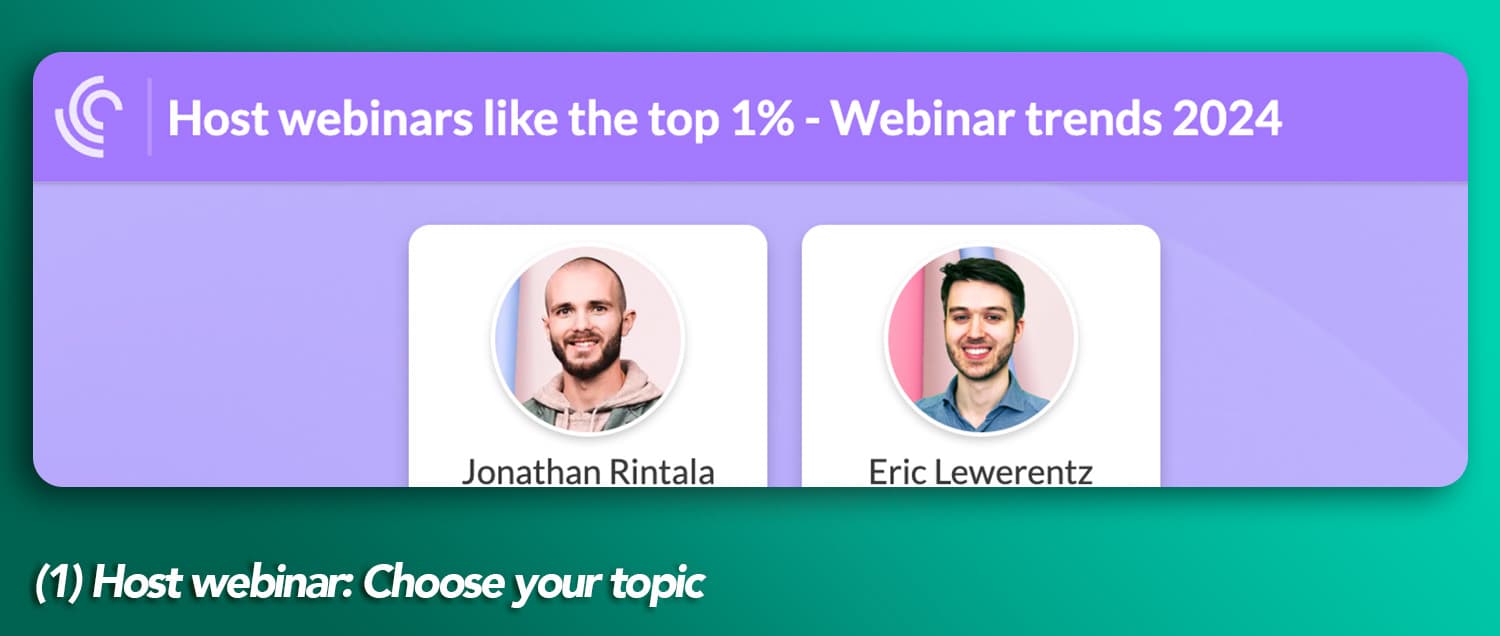
Inviting guest speakers or influencers in your space with existing audiences can be a great way to get signups. Especially, if you get them involved early on and feel part of the process.
Also, using Google Trends, Semrush, or LinkedIn to find relevant trends can be a good way to find a hot topic. Or, by simply talking to your sales or CS team to find current big pains in your industry.
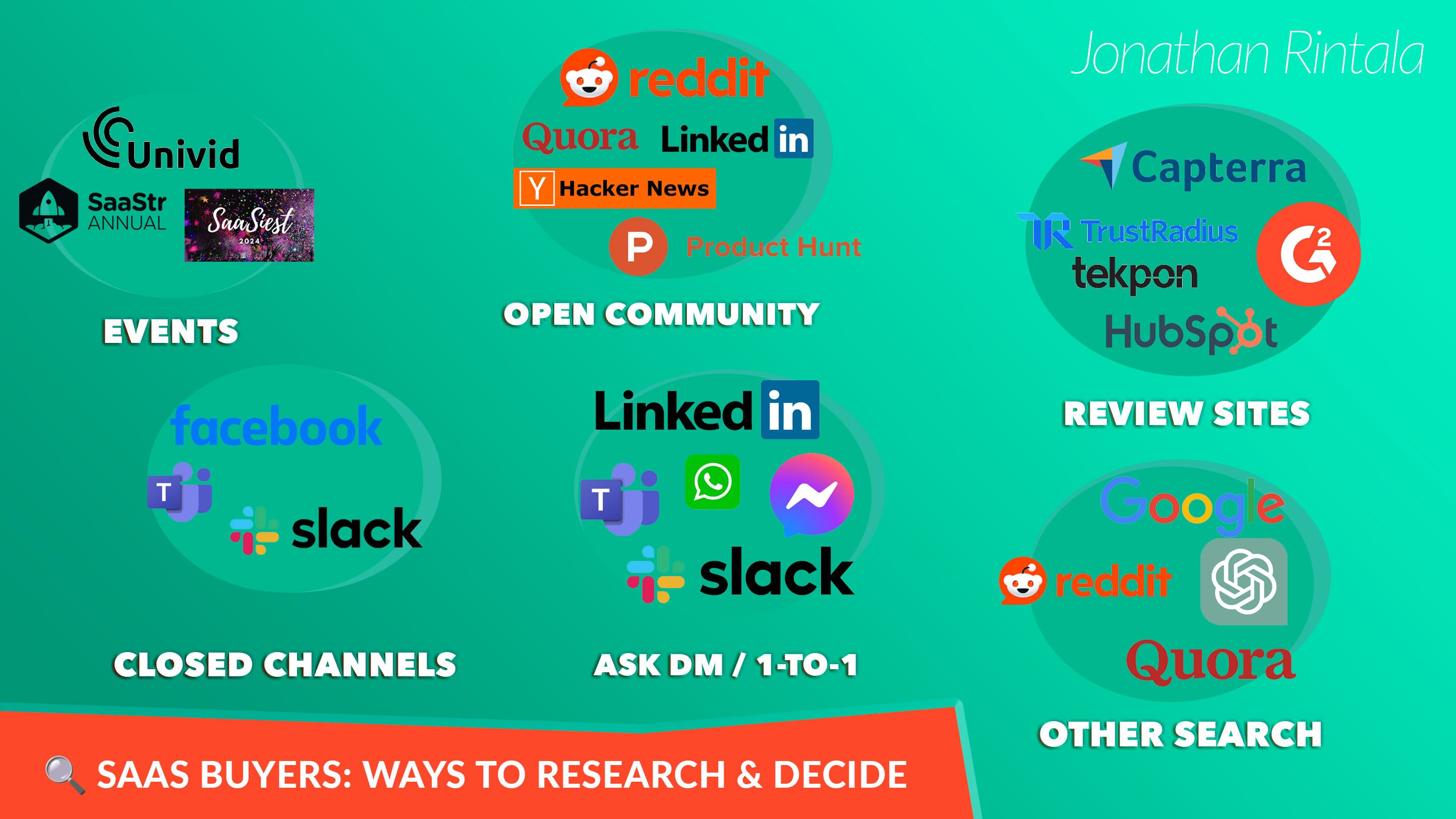
Step 2. Choose a date and time
Based on data, certain days of the week, and times of the day work better than others to get signups. The tricky thing is - that it depends on who your audience is.
For example, if you are:
B2C - evenings or lunch hours are ideal, as your prospects are not working and have time to attend events that are not work-related.
B2B SaaS - prefer day time webinars - as you are targeting professionals buying solutions for companies.

Tuesday, Wednesday, and Thursday are some general days (based on a study by Univid) that people prefer attending webinars in B2B. Also, 11AM, and 2PM are popular times that draw the most webinar registrations.
Step 3. Customize your branding
Most webinar platforms offer some level of customization. Some more than others. Here is what a basic webinar can look like in the Univid webinar platform before going live.
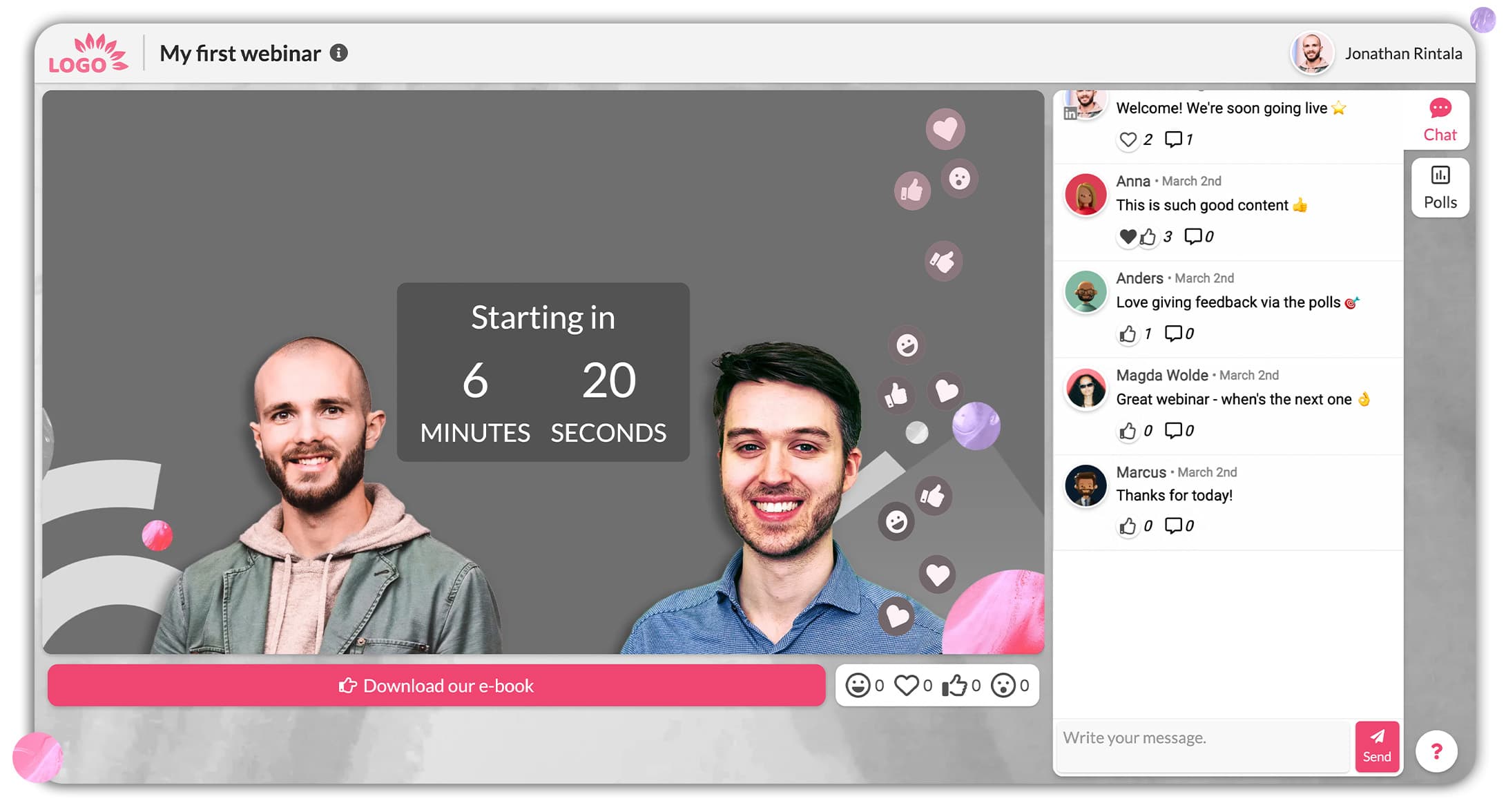
Where you can have a CTA button active to "download e-book", with chat, polls, and a countdown in a gray/pink theme:
And here are some other examples of different webinar brandings.

Also I would recommend to create webinar templates to easily re-use your favorite designs. That is a big time saver when scaling up your webinar efforts and building out webinar series.
Also, in AI-enabled platforms like Univid, you can let AI create a webinar design for you.
Step 4. Create marketing content
Typically, you would want to have some nice sharables in order to market the webinar.
The basic: create a 1920 x 1080 image containing the title, speakers, and date/time of the webinar. Also, add some graphics to make this pop - whether it's in the LinkedIn feed or email inbox.
Go the extra mile: create a short teaser video with the guest speaker or hosts. Publish it on social media and get some organic reach.
Ps. memes can also work well (depending on your target group) like this YT short I did promoting our webinar
Step 5. Send out your webinar invitations
Press publish and start to launch your marketing plan. Use the channels you are strong in already:
If you have a big newsletter - plug your webinar there
If you or your company has a large following on LinkedIn - post it there
Try some paid ads (if that is part of your playbook already)
Make your sales team help you push it to warm prospects
Ask your CS team to invite existing customers
Don't be afraid to send personal invites as DM:s on LinkedIn, and email - people appreciate if you invite them exclusively and it can be a good reason to reach out and stay top of mind.
Step 6. Build webinar content & write your CTA
You typically want to run through a slide deck - so prepare that.
But, many forget about planning out the interaction. Make a rough script and plan out all the points where you want to have interaction - for example "launch poll", "welcome people in the chat", etc.
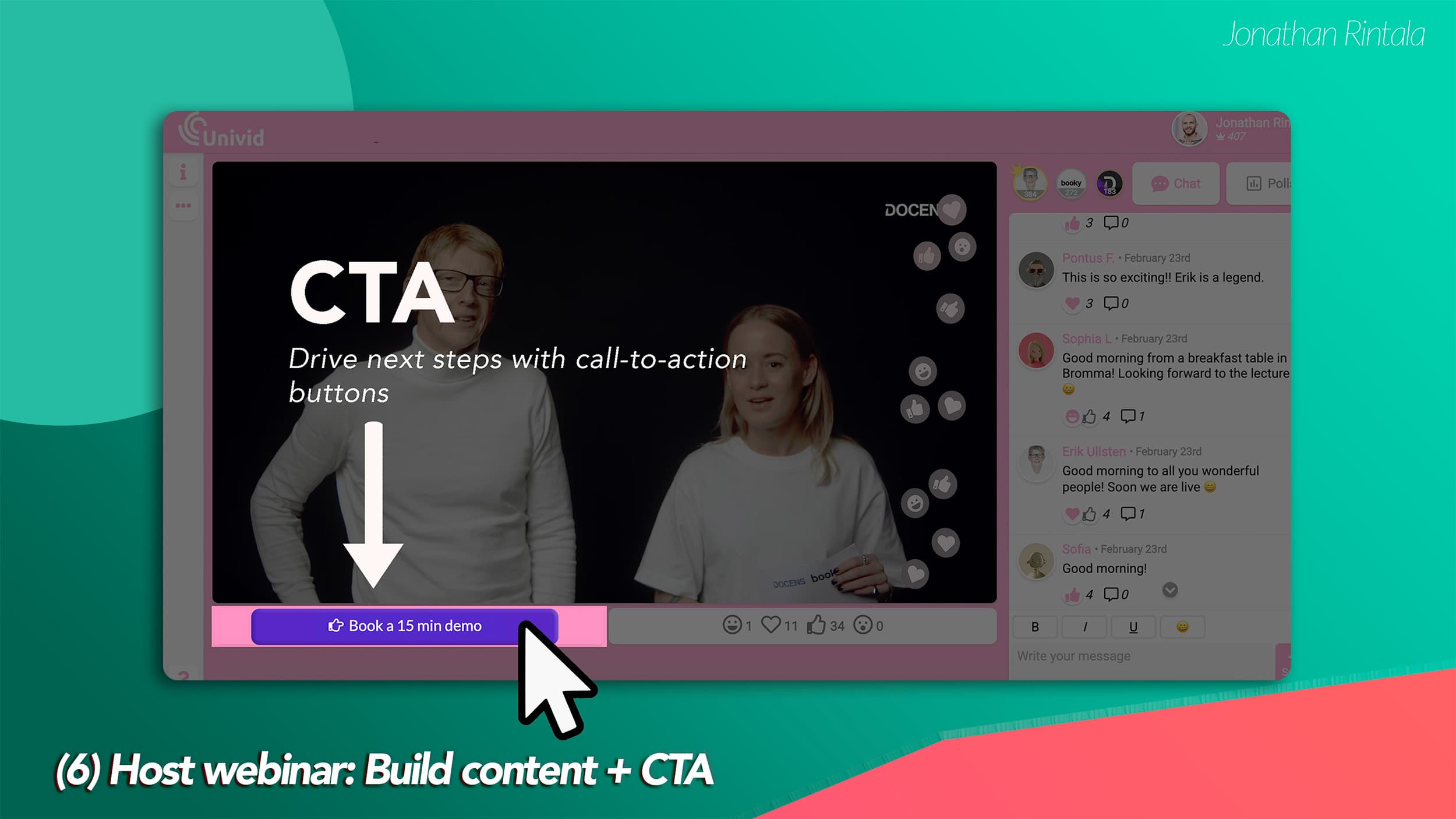
Also, no new customers without a CTA (call-to-action). Plan it out in detail. What will be your webinar CTA. Why should people click it. And when will your reveal it. Ideally, you want all the attendees to want to take this next step with you.
Step 7. Run a tech check
Run through the webinar with your guest speakers and quickly simulate exactly how the webinar will take place. Use the same mic, camera, and setup. You can skim through the agenda.
Also, think about how you will engage the audience, and at what points. Have everyone get familiar with your venue - ie. the webinar tool, and your roles.
Step 8. Host your webinar
It's finally time to go live! And remember - people love transparency and everything not being perfect. That's part of the live format.
So smile and be calm if things don't go perfectly according to plan.
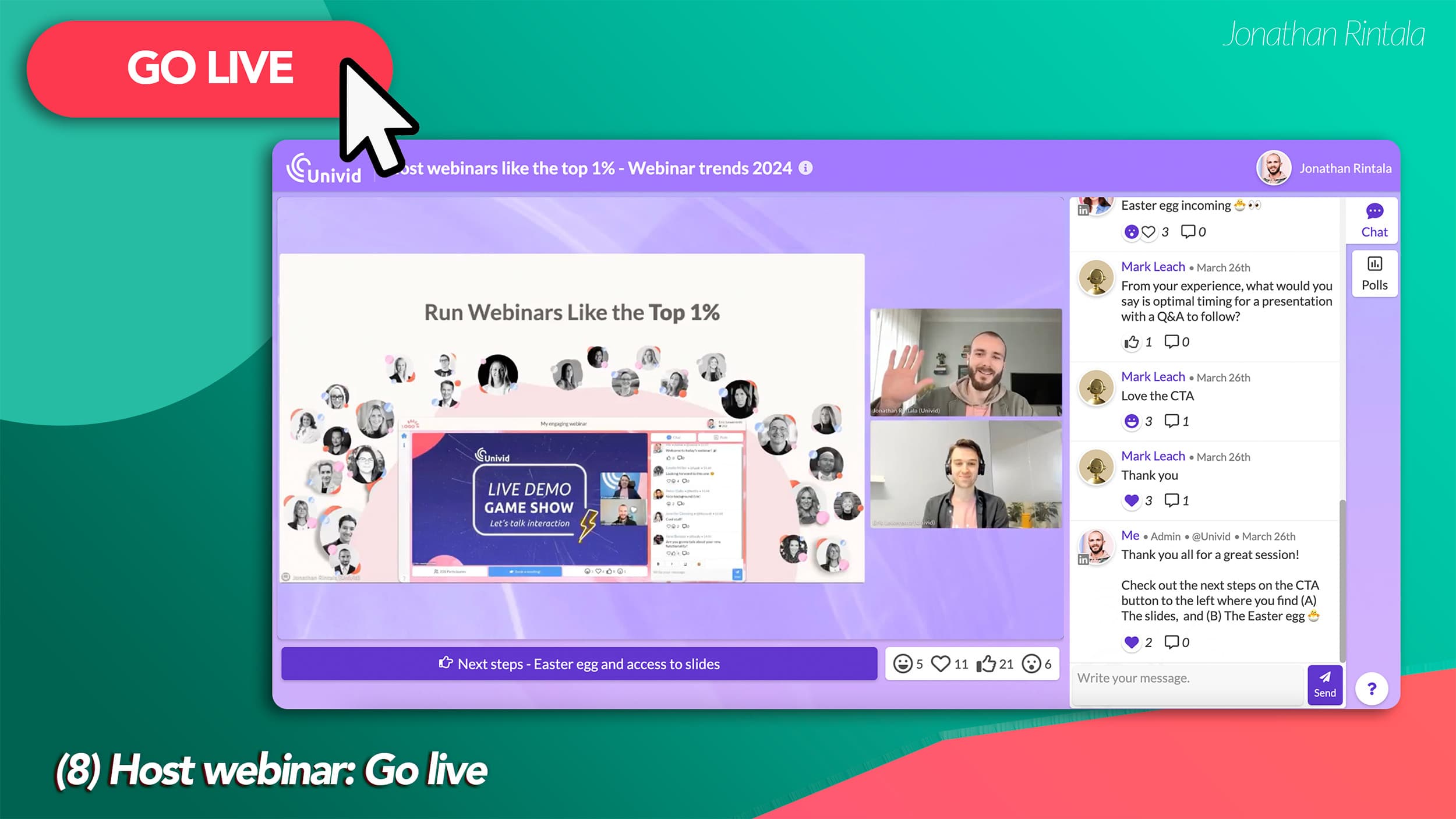
Also, remember to interact with the audience a lot - around every 15 minutes at least. Otherwise you will see attendee focus drifting off. For example:
shout out someone by their name from the chat
tell people to write in the chat where they are watching from
encourage everyone to react with "thumbs up" if they are excited topic A or B
pick up a spontaneous Q&A question
Step 9. Follow up
Make sure you follow up with all your registrants shortly after the webinar, both the (a) attendees, and (b) no-shows. In a good webinar software you are able to direct the follow-up communication slightly for each of the groups.
Preferably follow up within a few hours after hosting the live webinar. At latest within 24 hours.

Share your CTA (again), the recording of the webinar, and any additional resources. Also, make it conversational and open up for any questions or thoughts. Surprisingly many people actually answer these emails - so make sure you create a dialogue.
Step 10. Make your webinar recording available
Webinars are effective as they generate content that can be repurposed and live on after the live webinar is hosted. Publishing the recorded webinar will allow you to generate leads after the webinar is finished.
You can either:
(A) publish the recording ungated (for example on Youtube), or similar - to get long-tail and maximize the reach of your content.
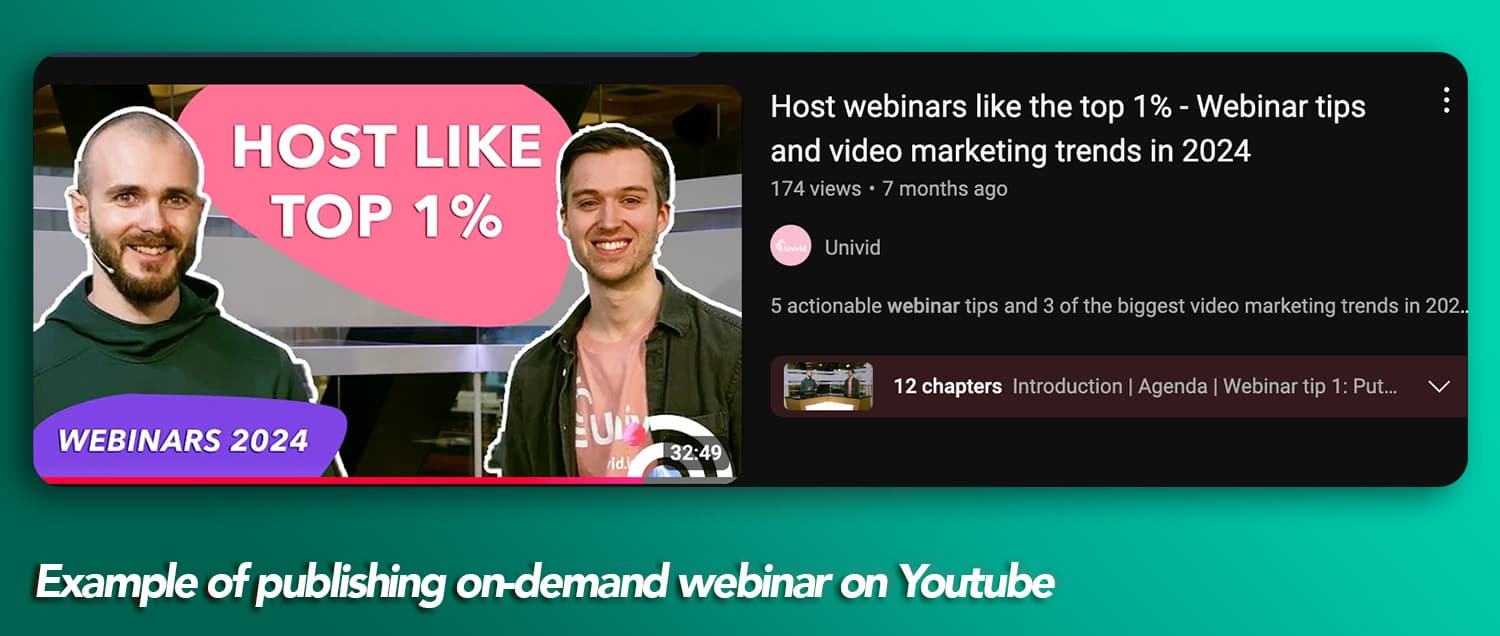
(B) Or, you can put the webinar behind a form. Thus, creating a lead magnet which people will want to leave their contact details to access.

Psst. a good webinar software offers the option to publish the recording on the same link afterwards as well - so attendees and no-shows can access the recording immediately after.
Bonus: Repurpose
The magic is when you turn your webinars into the center of your content flywheel, meaning you repurpose the webinar content into blog posts, guides, help center articles, and short form video on social media.
For my quick guide on how I repurpose long-form video to short form video.
How to create a webinar in 60 seconds with Univid
If you’re ready to roll, follow these 5 steps to schedule your first webinar in Univid.
Here are the 5 steps to get started (it's free to try and you don't even need an account):
Go to Univid.io.
Fill in your website URL (the design will be created automatically).
Click "Create free webinar".
Invite your audience and manage registration (in the sidebar menu).
Go live from the Webinar Studio - you just need a laptop with a webcam.

Conclusion
In this webinar guide we have reviewed the basics of how to set up $100M webinar - ie. a webinar that is so good it will get you customers for your business. First, we defined what a webinar is. Then, using real life examples, we showed you why hosting a webinar might be a good idea (especially if you are in B2B SaaS). Finally, we provided 10 steps on how to set up a $100M webinar that gets you new customers.
Want to learn more about growing SaaS companies?

